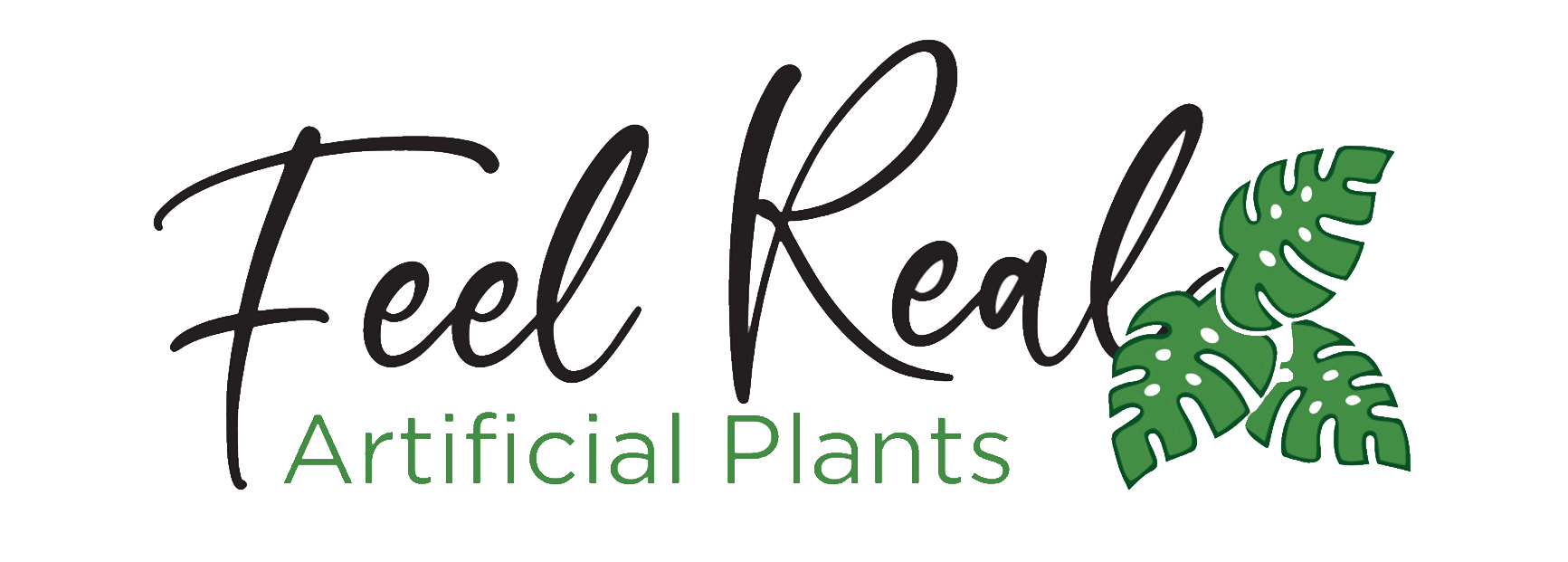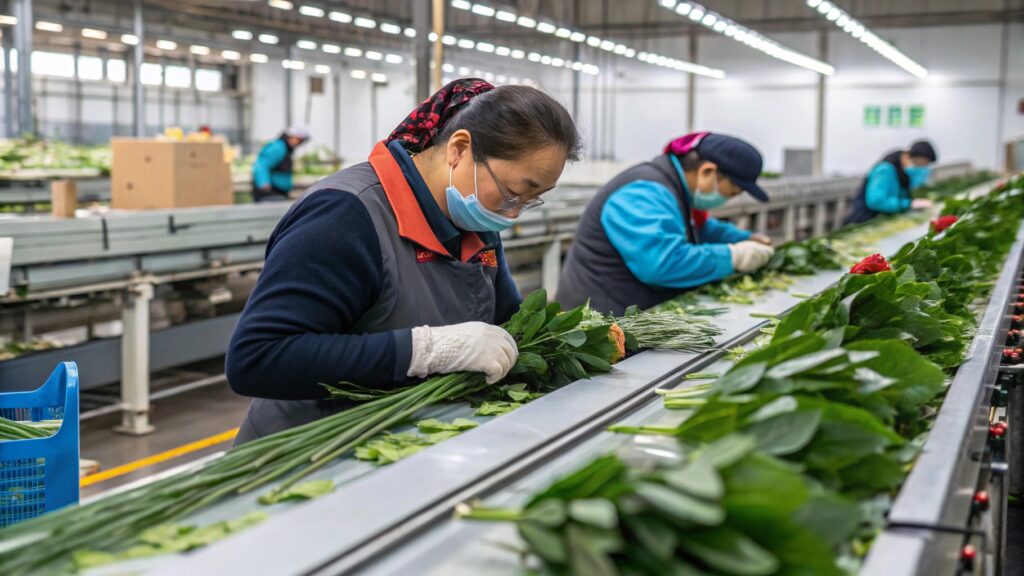Artificial plants have become the best solution for a seamless greenery and durable décor, whether in your living room or outside patio. From UV-resistant tall trees to realistic bonsai, these plants spice up decoration and are made from high-quality materials that resemble the color, texture and structure of a natural plant.
But have you ever asked what are artificial plants made of?
The basic components that go into the making of artificial plants include high-quality plastic and fabric. These materials have the ability to imitate the real appearance and texture of natural plants.
If you want to learn more about what are artificial plants made of, this materials guide has you covered.
Here’s what you’re going to learn from this complete material guide:
What’s the Difference Between Fake Plants, Artificial Plants, Faux Plants, and Silk Plants?
Generally, these terms “fake plants,” “faux plants,” “artificial plants,” and “silk plants,” are used interchangeably, but essentially means the same thing.
However, silk plants differ from the other plants mainly by the materials that go into the making and designing of silk plants.Synthetic fabrics or polyester are the main materials that make up the silk plants, making them imitate the appearance and feel of real silk.
The table below shed light on some of the slight differences between fake plants, artificial, silk and faux plant.
| Characteristics | Fake Plants | Artificial Plants | Faux Plants | Silk Plants |
| Material Used | Basic plastic | Upgraded synthetic | Premium faux fabrics | Synthetic fibre |
| Durability | Moderate | Durable | Moderate | Short, mostly used indoors |
| Realism | Low to medium | Medium to high | High | Very high (indoors) |
| Applications | Bulk use in events for decoration. | Hedges, Landscaping and more | Mostly Interior Design | Indoor activities such as weddings |
| Cost | Low | Medium | Medium to High | High |
What Materials Are Used to Make Artificial Plants Today?
People are shifting into the use of artificial plants because of their exceptional features that set them apart from natural plants. Nowadays, artificial plants are the most popular choice in today’s world for both exterior landscaping and interior decoration in residential places, commercial settings and more.
Whether it is an amazing bonsai in office places, a realistic boxwood hedge for landscaping, these plants contribute to a stunning greenery in any setting.
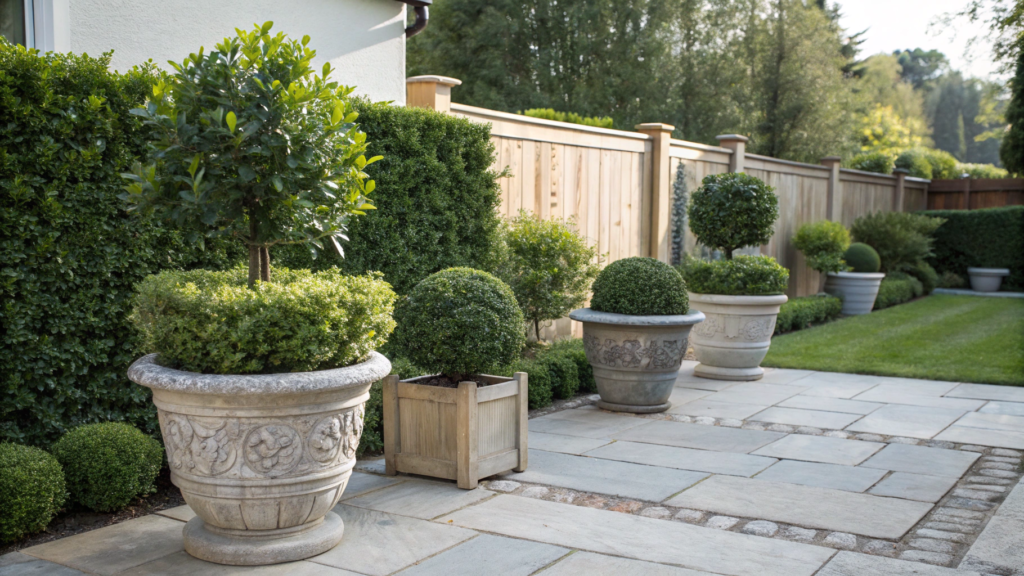
But what are artificial plants made of? This guide points out the best materials behind the impeccable artificial plants.
1. Plastic
Do you know artificial plants such as potted shrubs, fake succulents and bushes are made using plastics? The most popular choices of plastic used include the following:
- Polyvinyl chloride (PVC)
- Polyester
- Polyethylene
These plastics are usually recycled to enhance an eco-friendly décor in the living rooms, homes or garden.
Plastic materials are usually moulded into various forms such as branches, stems, leaves, and petals, making long-lasting and resilient structures.
Also, plastic materials are not prone to fading, making them an ideal solution for outdoor spaces, screening purposes and patios.
One standout feature about plastic materials is their ability to allow seamless shaping of trees, flowers and leaves, making them the perfect choice for large-scale artificial shrubbery.
2. Silk
Silk is another crucial material used to make artificial plants. This material was once considered the most sought-after component for producing high-quality, soft-textured and charming appearance artificial plants.
However, today, silk is not a popular choice in the making of artificial plants. The material is replaced by synthetic fibres or polyester, as natural silk is very expensive.
If you want a delicate and perfect look characterised by soft textured leaves for your indoor use, silk materials are the best. Silk plants are best for floral baskets and upscale greenery homes.
On the other hand, silk plants are not suitable for outdoor use because they’re not UV resistant, unlike other types of plants.
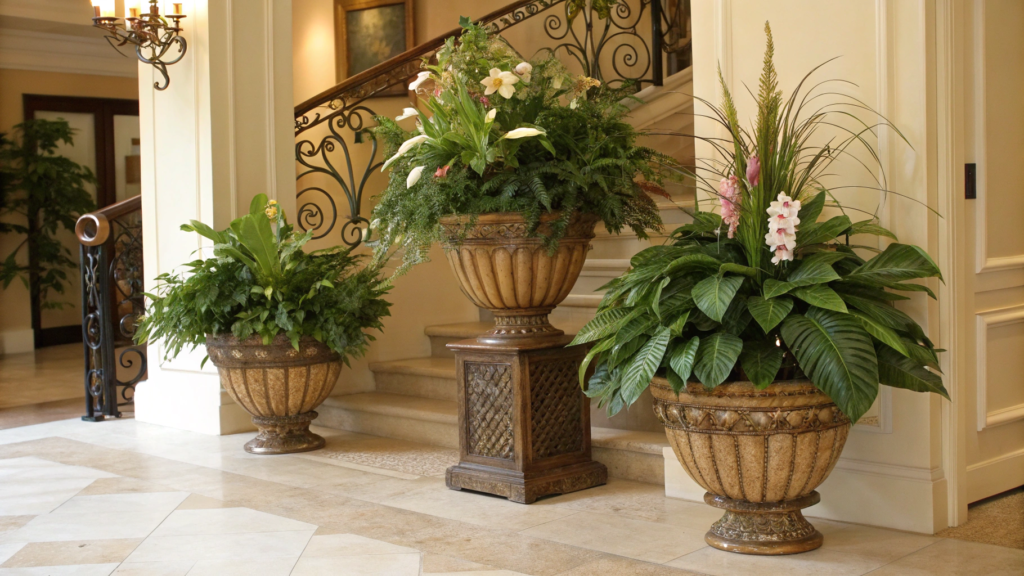
3. Foam
Foam in artificial plants is specifically used to create intricate elements in foliage and flowers. This material is light in weight, making it a suitable option for making detailed or very complicated textures without affecting the overall weight of the flower.
Many of the faux plants use foam to create leaves, a soft-textured appearance and petals. Foam material used in the making of artificial plants usually attempts to imitate the feel of the natural plant in its details.
4. Wire
How will tall trees, large outside decorations, and topiary maintain their shape and flexibility? That’s where wire comes in. Wire is an essential element used to make artificial plants and act as a backbone for many plants. This material is used to give strength and maintain the structure of plants, especially tall trees.
Wire gives these plants their desired shapes, ensuring stability in the living room should there come strong wind or abrupt destruction.
5. Pots and Planters
Pots and planters act as fundamental materials that go into the making of artificial plants today. Despite having wires, plastics, and foam, these plants can’t support themselves at the base if pots and planters are missing.
Planters or pots are made from plastic, resin, terracotta or ceramic, making them firm to support the entire system of artificial plants. However, many planters might not be included when bulk orders are made, therefore, allowing designers and businesses to choose their custom containers. Pots and planters spice up décor and match seamlessly into any space without inconvenience.
In a nutshell, artificial plants are made of plastic, foam, pots, wire and silk as discussed above.
How Are Fake Plants Made? A step-by-Step Guide
Have you ever wondered how fake plants are made despite their exceptional appearance and the vibrant impression they bring to your office or home?
Fake plants are recognized globally and are closely indistinguishable from natural plants. They’re used in outside landscaping, luxury living room decoration and residential places, among others.
Step 1: Design and Machine Setup
The first step in the making of fake plants begins with design and machine setup. This includes the use of design software and the technological setup of the machine to help in the production of high-quality artificial plants that resemble natural plants.
Step 2: Material Selection
Unlike in the past, today fake plants use improved raw materials to create leaves which looks natural and more appealing plants.
Once the machine setup is done, modern raw materials such as plastic, silk, wire, and foam are selected to jumpstart the manufacturing process.
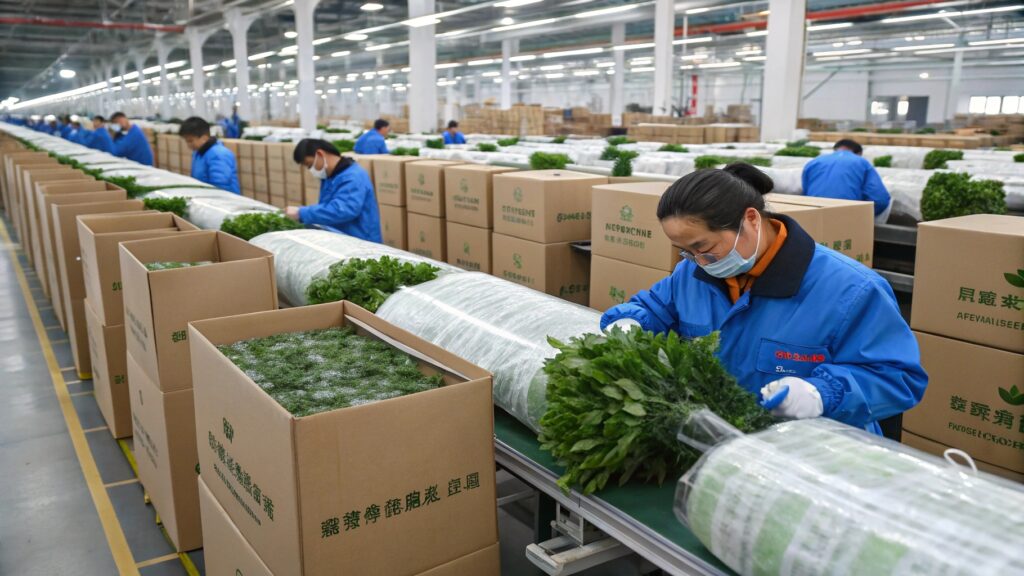
Step 3: Fabrics are cut into Shapes
This step involves die-cutting of fabric into different sizes and shapes to look like petals and leaves. The precision cutting of fabric gives room to the next step in the production of fake plants.
Step 4: Moulding
After fabrics are cut into different shapes and sizes, the cut pieces are selected and placed into a heated mould. The moulding process in the production of artificial plants permits them to have wrinkles and have natural curves to resemble real plant surfaces.
Step 5: Colouring the Parts
The petals and leaves are then colored to enhance their natural look.
Step 6: Wires are Added for the Structure
Wires are primarily used to offer support and maintain the structure of the plant. After the petals and leaves are colored, a thin wire is inserted by hand into some petals and leaves to make them stiff and streamline their shape.
Here is the procedure:
- Wires are coated with glue
- Fixed to the fake plant parts for longevity

Step 7: Involves UV Resistance Treatment
At FeelReal, we make fake plants UV- resistant by adding UV absorbers, light blockers or chemical stabilisers during the manufacturing process. The chemical added essentially helps the plastic to maintain its structure and color, especially when exposed to direct sunlight. We pride ourselves on producing and manufacturing high-quality and realistic artificial plants that are durable.
Step 8: Assemble the Produced Plant Components
After chemical treatment, the plant parts such as stems, petals and leaves are assembled with the help of machines or by hand. This process is done meticulously to avoid wastage of plant parts since one stem can undergo several processes and pieces to be done.
Waxy materials are often used in the assembly process to expedite the process and give a real texture to plant components, especially stems.
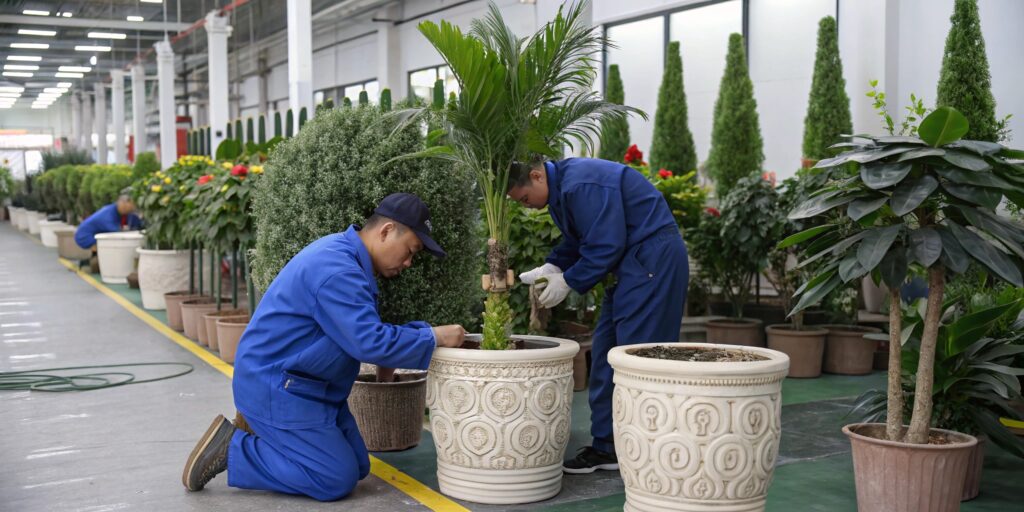
Step 9: Final Arrangement of Products
Arrangement is done once the assembly process is completed successfully. Fake plants are therefore arranged carefully into trees, bouquets, bushes or single stems depending on the design.
Arrangement of the products facilitates seamless packaging and shipping of the artificial plants, which is the last stage in the manufacturing of fake plants.
What Advanced Manufacturing Technologies Create Ultra-Realistic Plants?
The integration of advanced manufacturing technologies has streamlined the creation of ultra-realistic plants globally. These technologies permit manufacturers to produce artificial plants that are close to look, feel and have some behavioral features similar to that of natural plants.
Here are some of the most popular advanced manufacturing technologies driving this impactful transformation in artificial plants:
1. 3D Printing
3D printing is one of the advance manufacturing technologies that’s driving the transformation of artificial plant. This technology coupled together with addictive manufacturing plays a crucial role in the production, design and maximum maintenance of plants elements.
Typically, 3D printing and addictive manufacturing is the process where objects are created by depositing layers of premium materials on top of each other. This process is usually based on digital model.
These processes essentially help in the reduction of waste materials, customize products, saves time and cost among others. For instance, 3D printing and addictive manufacturing can facilitate creation of lightweight and complex components of the plants as well as replace the unnecessary plant elements.

2. Precision Molding and Injection Molding
If you’re looking for large volume of leaves, stems and structural parts consistently and with high speed, precision molding and injection molding has you covered,
Injection molding is primarily a key technological practice in the manufacturing of artificial plants. Large volume of leaves, stems and other structural plants component is propelled by this advanced manufacturing technology.
Synthetic material or molten plastic are injected into a custom-designed molds, which is usually under high pressure as the precision and injection process takes place. Once the material cools down and solidifies, they take the shape of the mold cavity.

3. Digital Design and Simulation Technologies
Simulation technologies and digital design plays a monumental role in artificial plant manufacturing. This advanced manufacturing technologies help in the plant appearance and the structural complexities.
Therefore, digital design and simulation tools and equipment permit manufactures to refine, prototype and conceptualize plant models with flawless accuracy. This process is achieved long before the plants are produced physically.
The following process contributes to the simulation and design technologies in artificial plants manufacturing:
· Computer-Aided Design (CAD)
Computer-Aided Design is at the center of design and simulation advanced manufacturing technologies. This software helps designers to craft 3D models of fake plants parts including leaves and even a complete tree canopy with accurate dimensions, surface textures and curves as needed.
· Digital design tools
Similarly, modern manufactures of artificial plants use digital design tool for the following purposes:
- Structural optimization
- Textural mapping
- Customization according to Different requirements.
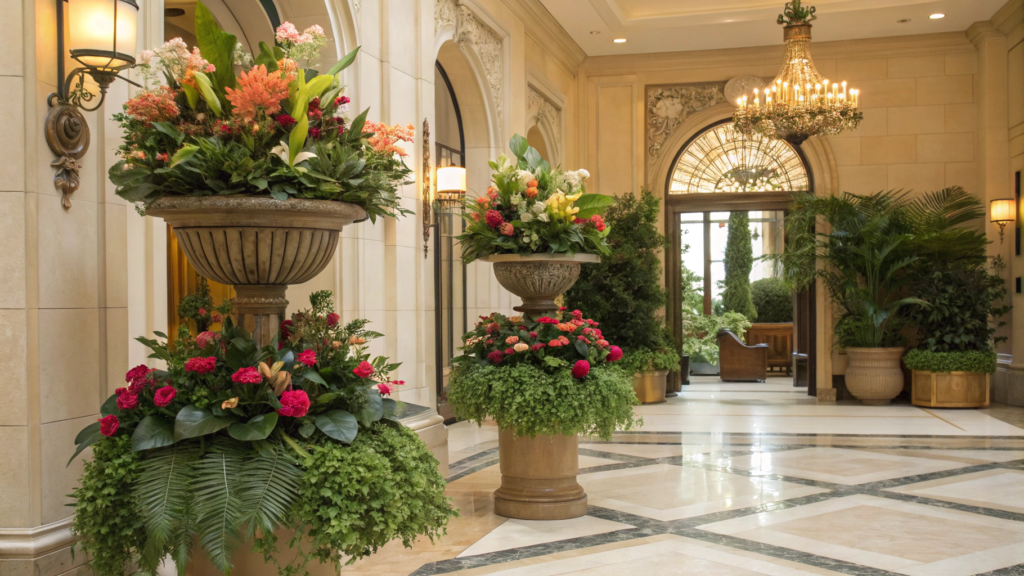
4. Use of Specialized Materials
Creating ultra-realistic artificial plants is not all about the use of design software or precision molding, it also relies heavily on the type of materials used.
Modern and high-quality artificial plants are created from premium and specialize materials that are durable and look real or natural.
The use of specialize materials in creation of ultra-realistic artificial plants makes them ideal for use in different occasion such as indoor and outdoor decoration among others.
Some of the common specialized materials used in designing ultra-realistic fake plants include:
- Premium Plastics
- High-quality fabric
- UV-resistant coatings
Therefore, advanced manufacturing technologies such as use of specialized materials, 3D printing and specialised moulding techniques are the best combination used to create ultra-realistic plants.
At FeelReal, our advanced manufacturing technologies give room for exact imitation of real plants’ features such as colour variations, detailed leaf textures and natural feel of a real plant.
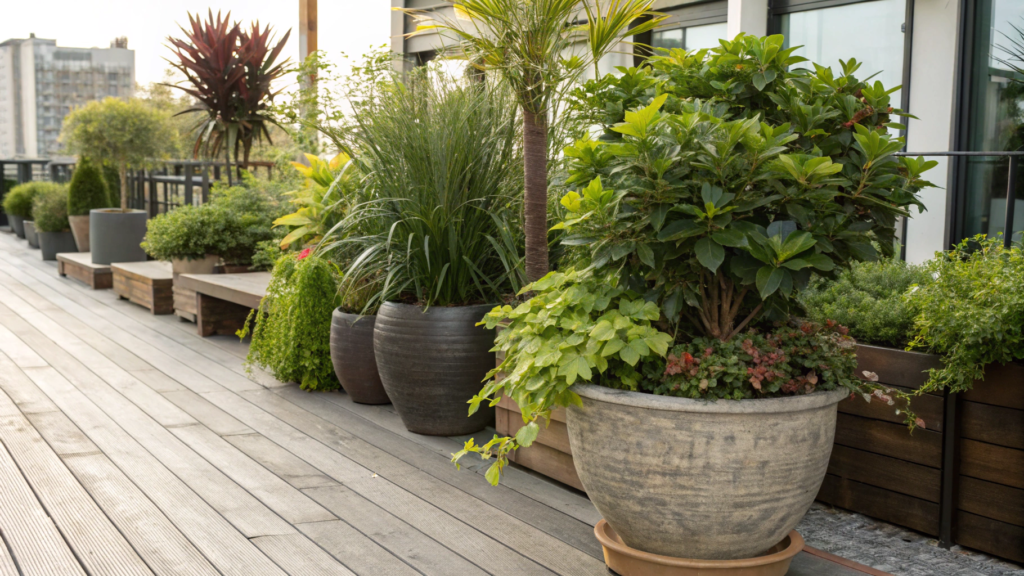
How to Choose the Right Material for Your Needs?
Choosing the right material for artificial plants is where many go wrong. There are many factors to consider when deciding on the appropriate material for your fake plants.
If you want to make an informed decision in 2025 moving forward, this guide narrows down to the best factors to consider when selecting the best material for your artificial plant.
1. Determine Your Location
The location of your artificial plant plays a significant role in determining the right material for your fake plant. Not all materials used to make artificial plants are best for outdoor spaces or indoor settings.
For instance, silk, which is extremely soft textured, more appealing and realistic, works best for indoor decoration, unlike outside spaces. On the other hand, polyethene is long-lasting and can withstand harsh weather conditions, and is generally the best for patios, gardens, etc.
You must identify the setting of your artificial plant first to determine which material to incorporate into your artificial plant production.
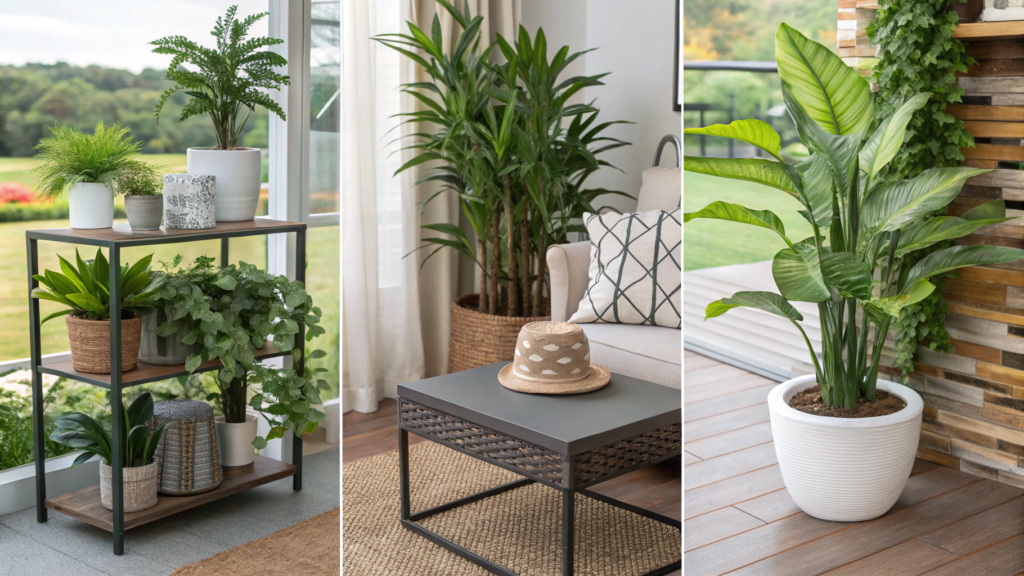
2. Know Your Aesthetic Goals
Your aesthetic goal is another crucial element to consider when choosing the right material for your fake plant.
What are you looking for?
Is it durability or realism?
Having a clear goal will set your focus right on what to choose. For instance, if you’re much into a realistic look, elegance and soft-textured leaves, silk materials will serve you the best.
Silk material is considered the best for luxury interiors, weddings and colorful events. In contrast, plastic materials are durable and ideal for commercial settings or high-traffic areas. They can withstand harsh weather conditions and spice up your office space or living room.
Therefore, having a clear aesthetic goal will help you select plastic material for your commercial spaces and silk material for indoor purposes effortlessly.
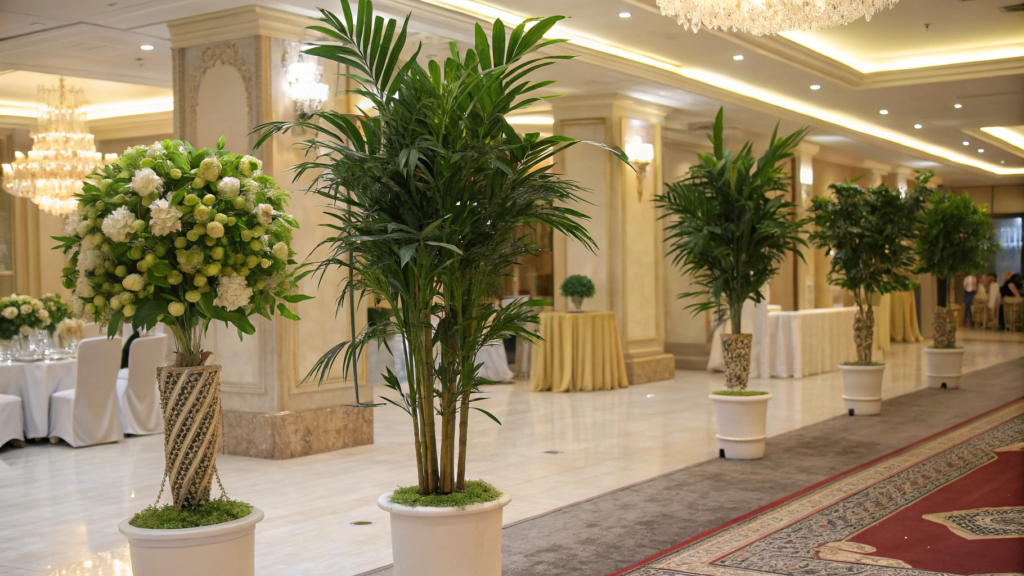
3. Identify the Maintenance and Cleaning Abilities of the Material
The materials used to make artificial plants come with different maintenance and cleaning procedures. Some are easy to clean while others require maximum care during cleaning.
For instance, rubber, plastic and polyethene require little to no skills when cleaning them. You can use a damp cloth to clean your plastic material, making these types of materials best for business or homeowners.
Silk plant, on the other hand, is designed with delicate materials, making it challenging to clean with water. These materials are not water-resistant and need care when handling them.
Acquainting yourself with the above insights places you ahead of others, helping you to make informed decisions when selecting artificial plant materials.
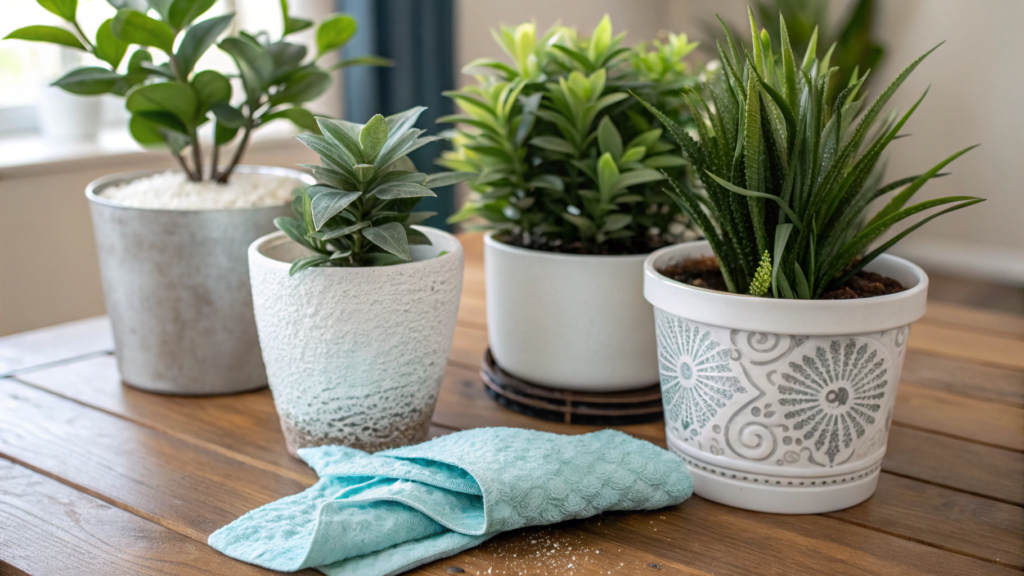
4. Factor in Material Costs
Your budget plays a crucial role, as the price of artificial plants is directly linked to the materials they’re made from.
- High-End: Silk sits at the top of the price range. Its high cost reflects its delicate, premium texture and highly realistic appearance, making it a luxury choice.
- Budget-Friendly: At the other end of the spectrum, polyester fabric is the most economical option, making it ideal for large-scale decorations or when cost is the primary concern.
- Mid-Range: Materials like polyethylene and other general plastics fall into a moderate price category. They offer a great balance of durability, realism, and affordability, making them the most common choice for a wide variety of indoor and outdoor plants.
5. Evaluate The Environmental Exposure
Environmental exposure is another key element you need to factor out when choosing the right material for your artificial plant. The environmental place where you’ll place your artificial plant greatly matters.
In many cases, this aspect will determine the lifespan of your artificial plant. Needless to say, direct exposure of artificial plants to sunlight, wind, humidity, heat or heavy rain can significantly cause damage or lower the quality of the material over time when exposed to such conditions.
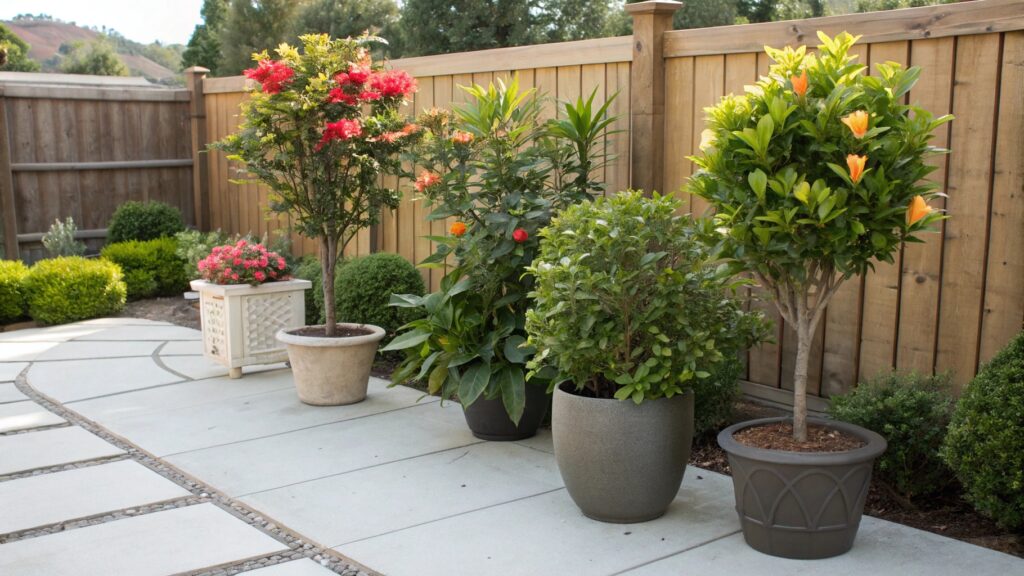
If you’re looking for the best artificial plants for your outdoor setting. Always consider those labeled weatherproof, UV-resistant, exterior-grade or water-resistant.
These labels indicate the plants are meant for long-term outside exposure and they’re not susceptible to heavy rain, humidity, heat or direct sunlight.
Trends in Artificial Plant Materials in 2025
As smart design, advanced realism, and sustainability continue to impact stylish artificial plant materials in 2025, they are rapidly evolving, giving room for smart integration into different design styles in homes, commercial spaces, outdoor settings and more.
Here’s a comprehensive look at the top material trends streamlining the artificial plant industry in 2025;
- Manufacturers are embracing the use of recycled or biodegradable materials in 2025.
- There’s a big paradigm shift gearing towards the use of realistic leaves, petals and super-soft textured surfaces that imitate the texture of natural plants.
- The chemically treated materials with UV resistance are becoming a big thing in 2025, particularly for outside decoration.

FAQ about Artificial Plants
Which Materials Are Best for Outdoor Artificial Plants?
Plastic, polyethene, and UV-treated polyester are primarily considered the best materials for outdoor spaces. These materials are weather-resistant, durable and UV-resistant.
Can Artificial Plants Be Eco-Friendly?
Yes. However, several factors such as the material used, the disposal technique and the manufacturing processes often determine whether artificial plants will be eco-friendly or not.
How long do Fake plants last outside?
Fake plants can last for a period of 5 to 7 years outside and can even run up to 10 years, provided they’re UV protected. Failure to pass through chemicals may last for a couple of months because of weather and extreme sunlight exposure.
